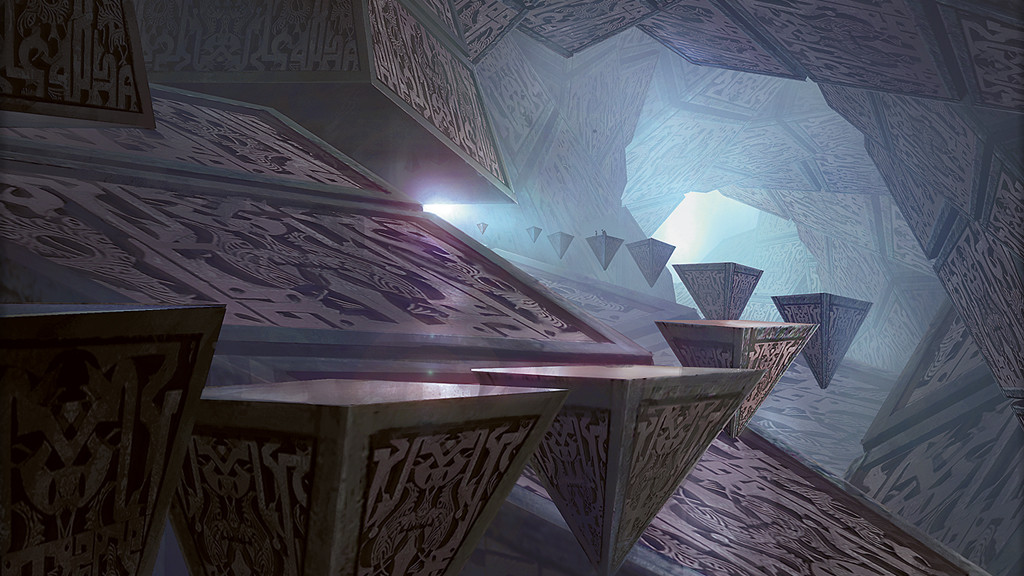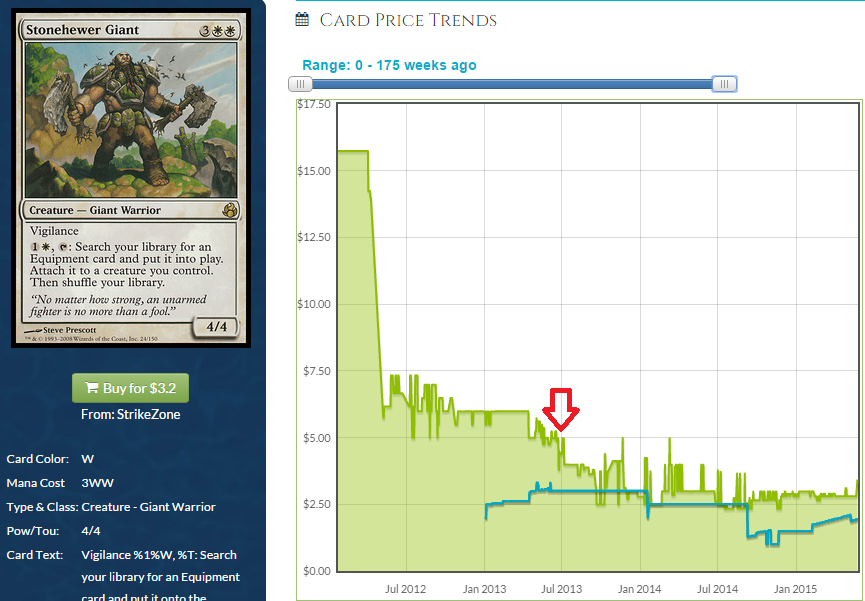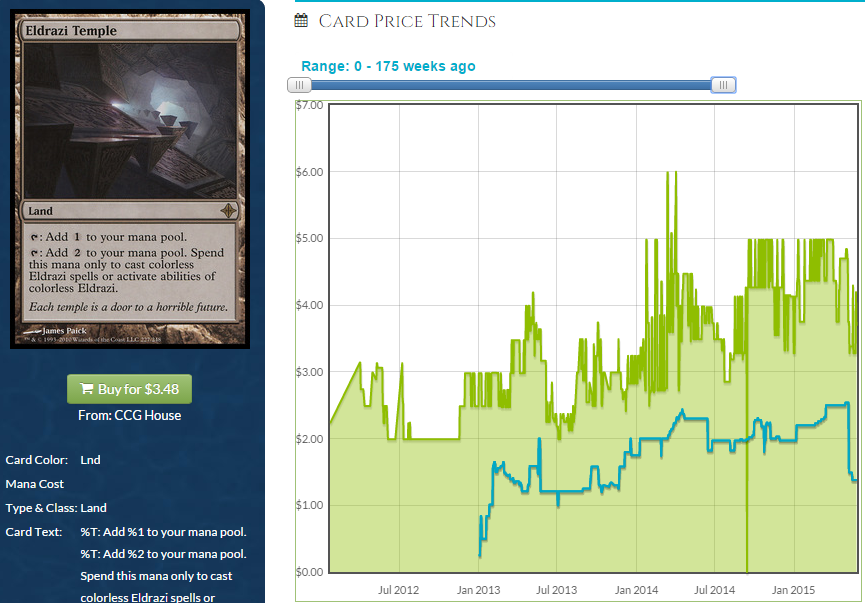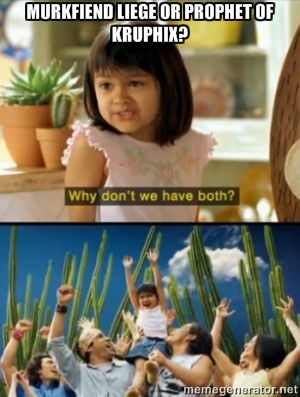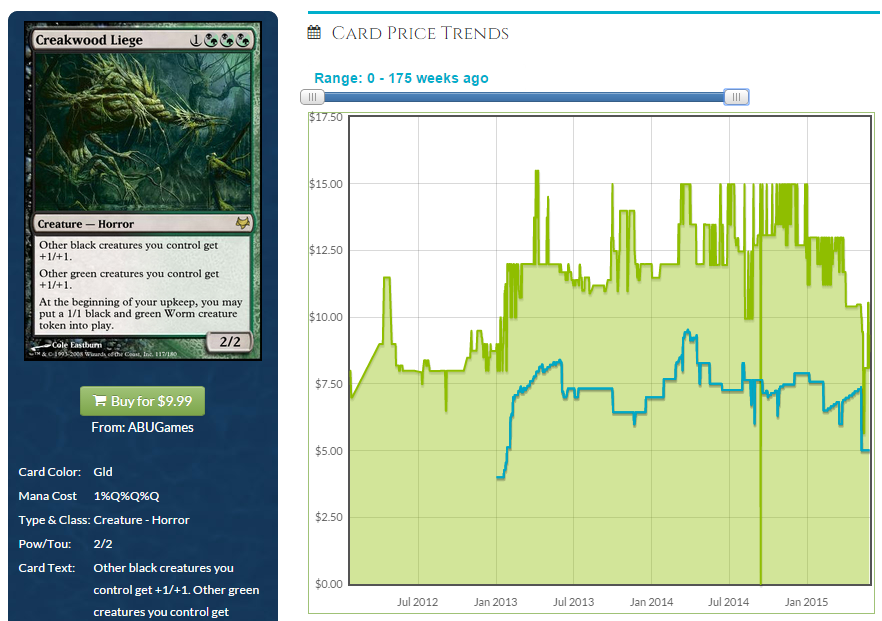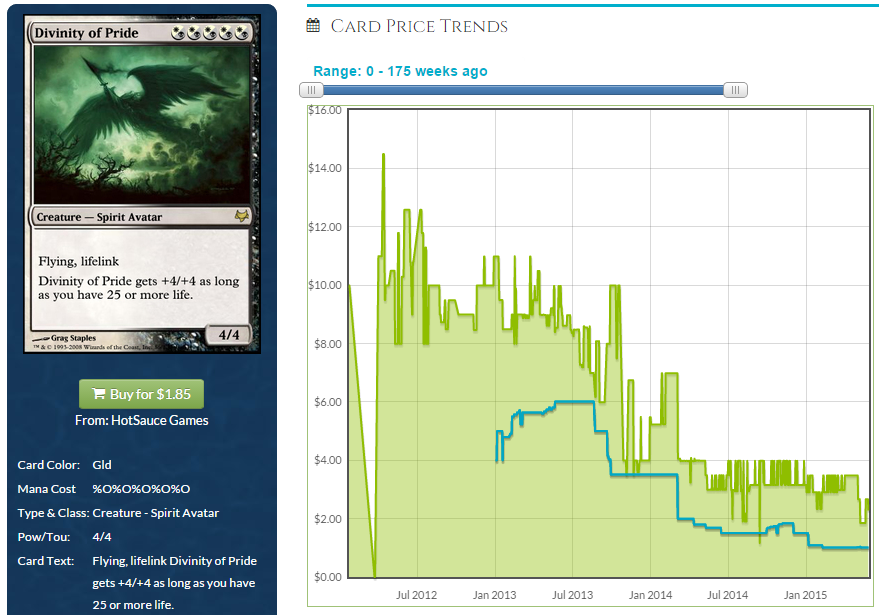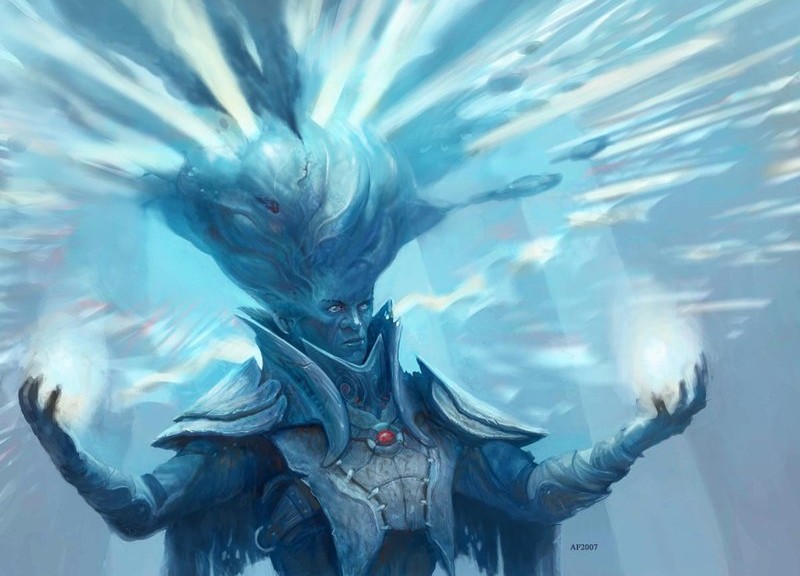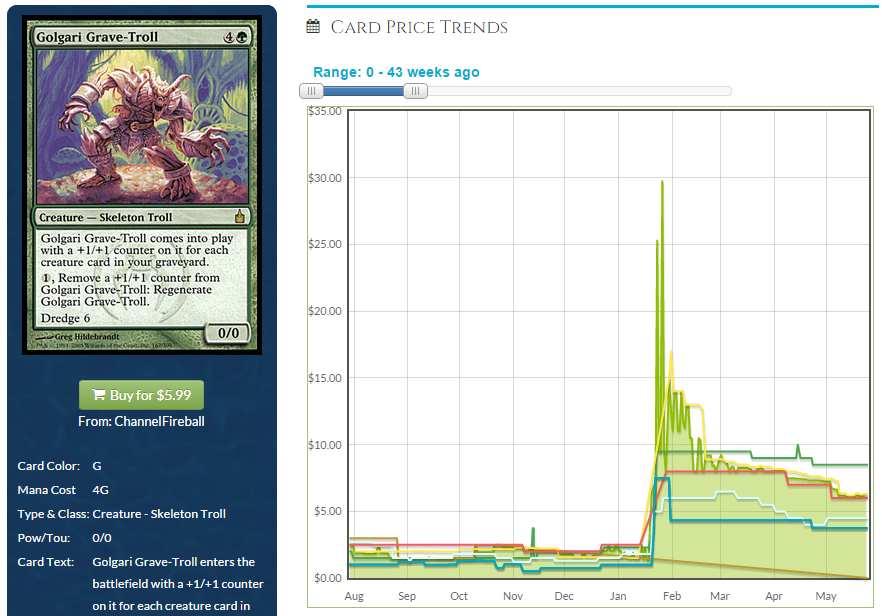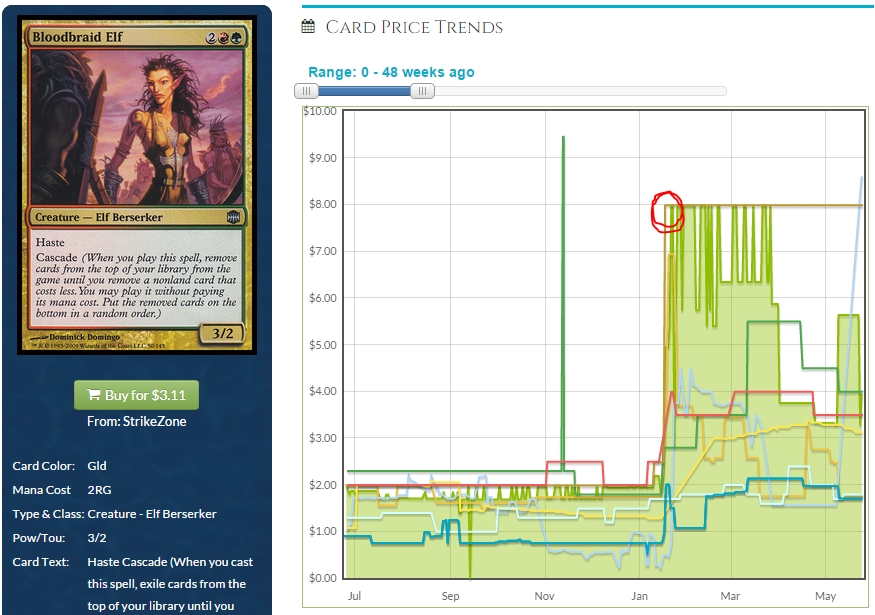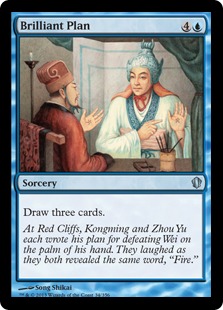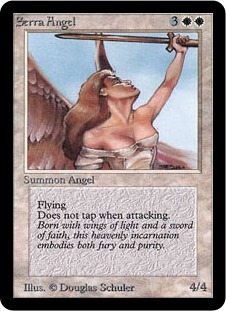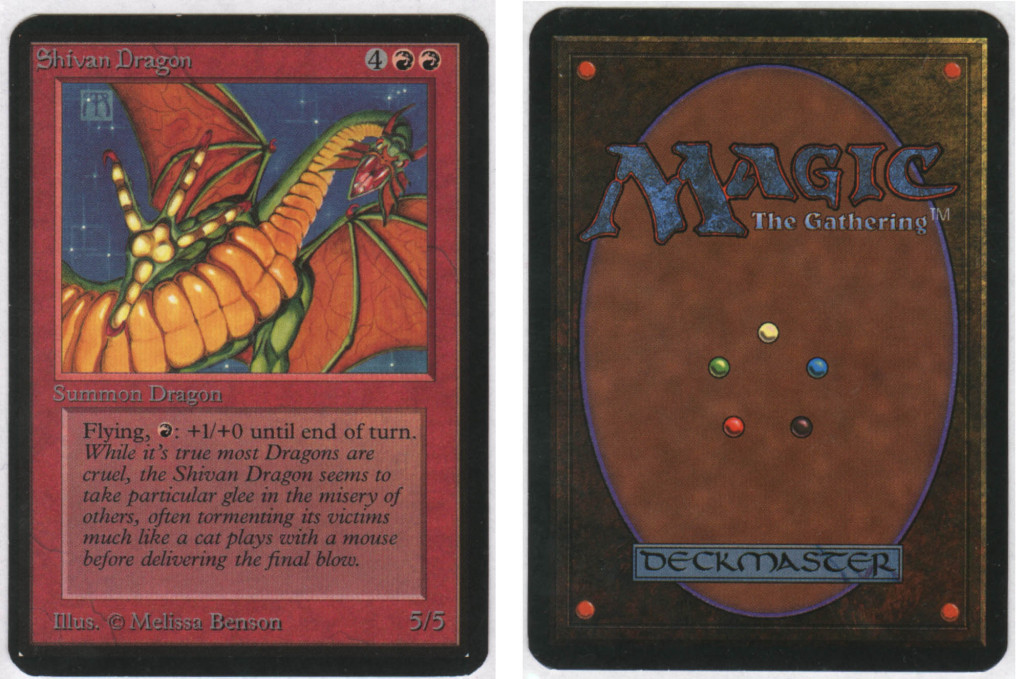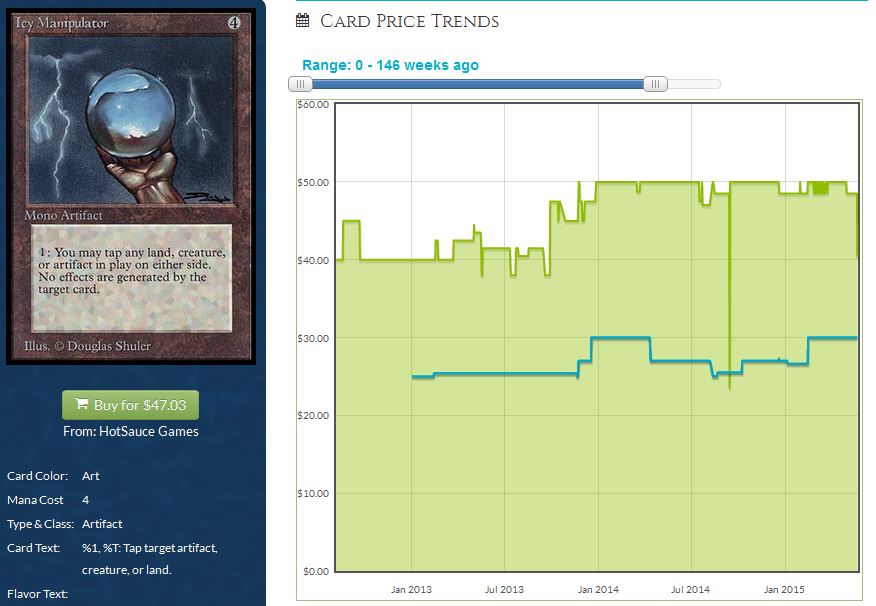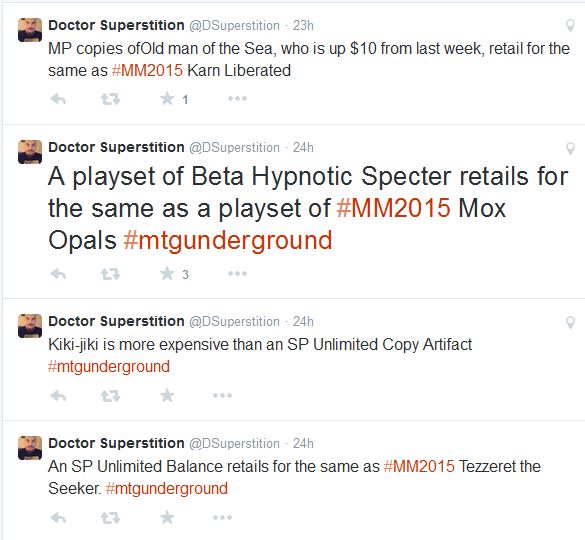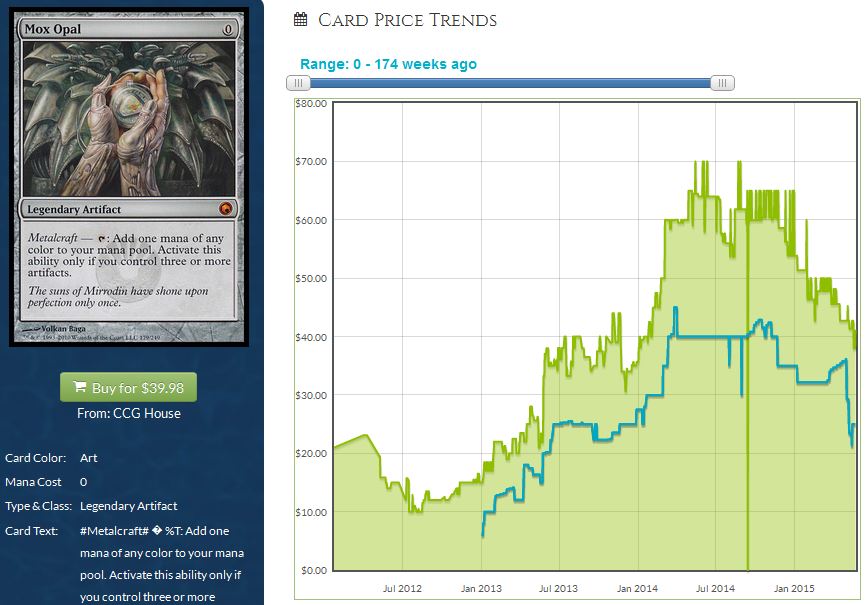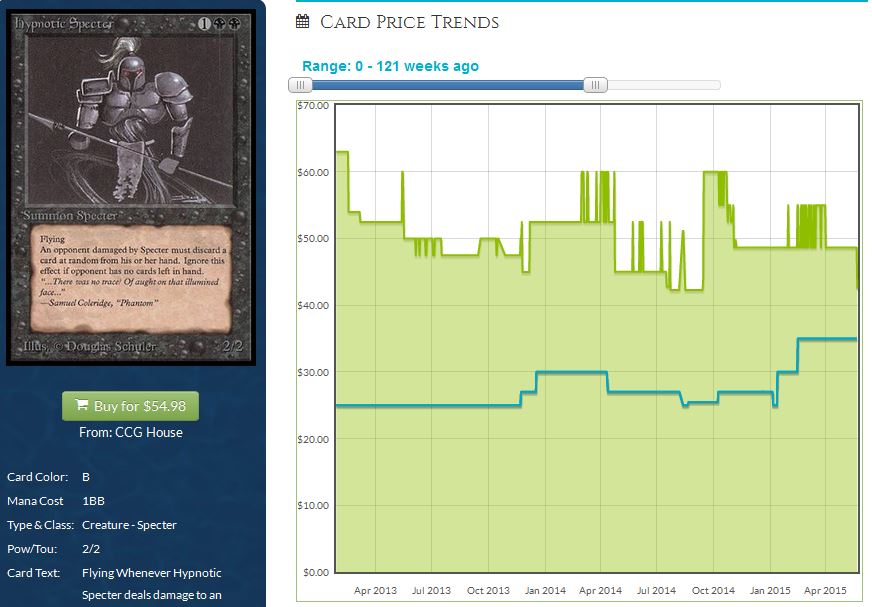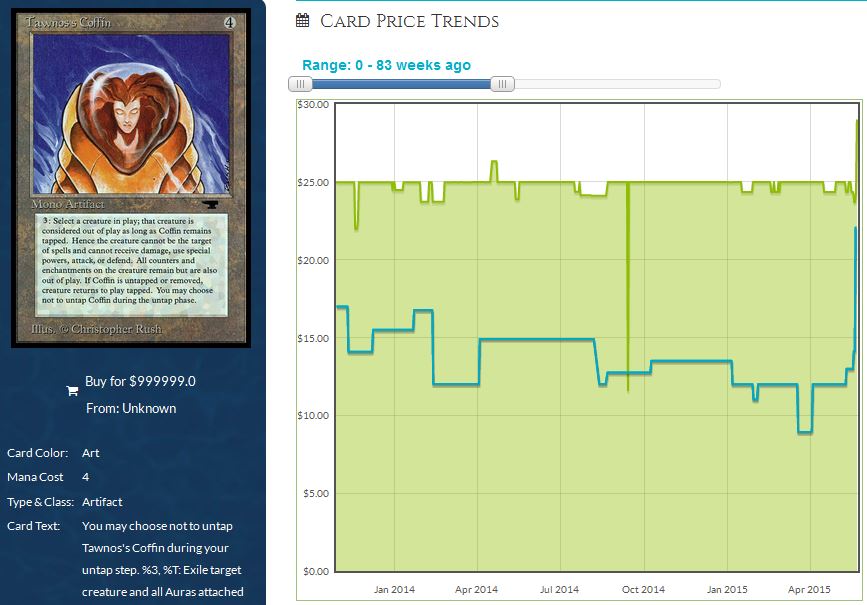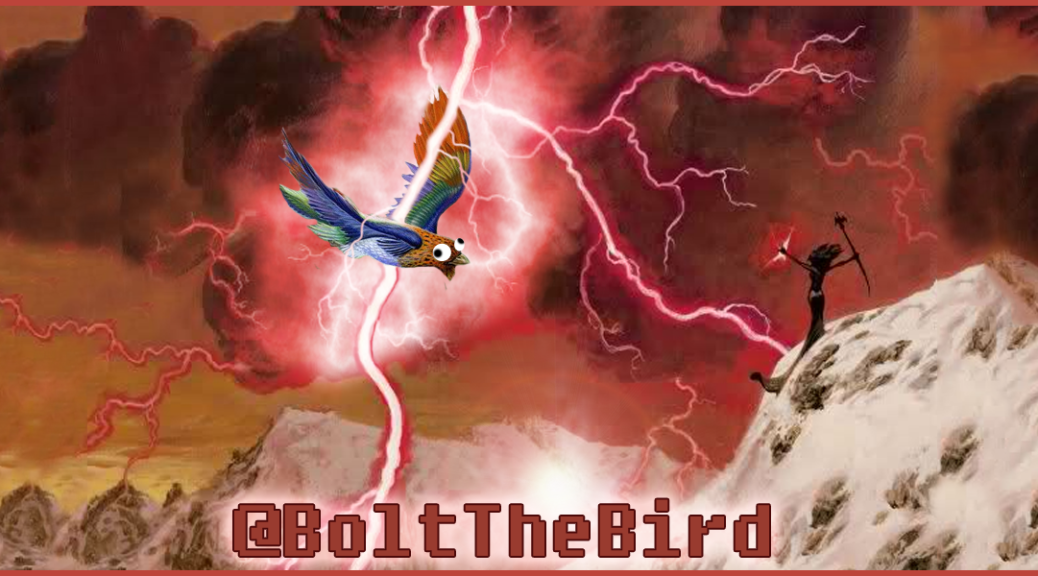On a recent episode of the Money Draught podcast, financier JR (@time_elemental) lamented the lack of real EDH cards in Modern Masters 2015. While Modern Masters…One (I guess) included a lot of EDH staples in an attempt to bring their prices down while simultaneously not acknowledging the secondary market, Modern Masters 2015 doesn’t seem to.
Not only that, the cards that are included aren’t quite build-arounds like last time. While Doubling Season was the linchpin in a draft archetype, we don’t see similar things in Modern Masters 2015. The lack of real EDH cards is going to confound our ability to predict what prices will do to an extent, but let’s dive in anyway. Even though we don’t have a ton of EDH cards this time, there is some gold there.

So what exactly did we get handed to us last time?
- Elspeth, Knight-Errant
- Kiki-Jiki, Mirror Breaker
- The Dragon Spirit cycle, some of which are playable
- Take Posession
- Krosan Grip
- Reveillark
- Summoner’s Pact
- Adarkar Valkyrie
- Greater Gargadon
- Woodfall Primus
- Stonehewer Giant
- Verdeloth the Ancient
- Doubling Season
- Glen Elendra Archmage
- Rude Awakening
- Death Cloud
- Tooth and Nail
- Progenitus
- Grand Arbiter Augustin IV
- Knight of the Reliquary
- Jhoira of the Ghitu
- Trygon Predator
- Oona, Queen of the Fae
- Divinity of Pride
- Worm Harvest
- Sword of Light and Shadow
- Sword of Fire and Ice
- Vedalken Shackles
- Engineered Explosives
- Lotus Bloom
- City of Brass
- Academy Ruins
Wow, that’s quite a list. We had a substantial portion of the set overlap with cards we find useful in EDH. Let’s compare the size of the list to the size of the list from Modern Masters 2015.
- Kozilek, Butcher of Truth
- Ulamog, the Inifinite Gyre
- All is Dust
- Karn Liberated
- Elesh Norn, Grand Cenobite
- Tezzeret the Seeker
- Comet Storm
- Iona, Shield of Emeria (if you have no friends, or wish you didn’t)
- Kiki-Jiki, Mirror Breaker (now with 100-percent less Pestermite in Limited)
- Battlegrace Angel
- All Sun’s Dawn
- Hellkite Charger
- Hurkyl’s Recall
- Overwhelming Stampede
- Inexorable Tide
- Wildfire
- Wolfbriar Elemental
- Apocalypse Hydra
- Ghost Council of Orzhova
- Horde of Notions
- Niv-Mizzet, the Firemind
- Creakwood Liege
- Nobilis of War
- Wilt-Leaf Liege
- Precursor Golem
- Sunforger
- Karoo lands (?)
If some of those are a bit of a stretch, don’t worry, because even with me stretching the list out, it’s much, much shorter than the list of EDH goodies in the first Modern Masters set.
With Modern Masters 2015 promising an even larger print run than the first Modern Masters set, expect prices to dip even more profoundly than last time even after you account for all the product that is going to be damaged by WOTC’s shoddy, experimental packaging.
How much do we expect to see prices dip? When should we buy in for some of these cards? Which cards’ prices do we never expect to recover? What are some factors that we don’t always consider? Let’s delve in a bit and see if we can’t make a few predictions based on last time, where we saw a smaller print run but also way more people excited to open boosters.
Reality had a profound effect on the price of Stonehewer, bringing it down to the $5 range long before the announcement of the reprint, but Modern Masters took a solid EDH staple that most valued as a bulk rare without knowing it was a solid $5 pick and turned it into a card worth half that at best. Even the printing of a mono-white, equipment-themed EDH deck only affected the spread—it increased slightly but the price is thus far unperturbed two years on. Stonehewer demonstrated an ability to be in high demand and fetch ridiculous prices when everyone was equipment crazy, but if that happens again, don’t expect Giant to be able to reach its previous ceiling. It’s possible its price of above $10 may have prompted its inclusion in Modern Masters, since it took so long for the set to go from conception to boosters, but regardless, we’re only seeing faint glimmers of price recovery two years on.
You can sort of control for the effect of Modern caring less about Giant if you look at another card touted in Modern initially and abandoned at the same time: Steelshaper’s Gift. If you look at the price of Steelshaper’s Gift over the same time frame as Giant, the effect of Modern becomes clearer and you can see what was that demand decrease and what was purely the result of the reprinting in the first Modern Masters set. This isn’t exactly a quantitative effect, but even a qualitative one can show there are two distinct periods of price decline and which one was predicated on the reprint.
Do I see a corollary in Modern Masters 2015?
While we don’t expect ordinary cards in the $5 range to recover in price, expect Temple to be crushed into powder. A reprint at uncommon is going to be devastating to the price, and the spread reflects that: growing astronomically as dealers head for the hills. While its price isn’t predicated on EDH play, I see this card and it’s $5-ish price tag and think of Stonehewer’s abject failure to recover its price despite there being more excitement around a card like it than ever before. Narrow cards like Stonehewer that are good at what they do but relegated to only a few decks are going to suffer for longer than the two years it has been since the last Modern Masters set, and I expect Eldrazi Temple is entirely done for as a result. While some uncommons like Path to Exile have demonstrated an ability to stay around $5, Eldrazi Temple is not Path, and a realistic floor could end up under $1. If it had been reprinted at rare, I’d still expect it to hit $2.
How does this compare to a card reprinted in a different manner? Let’a look at an EDH staple that was reprinted in a Commander deck and see if we see a similar price decline or a dissimilar one. Since we are decent at predicting what a Commander reprint will do, let’s try and compare the two effects and try to apply that to a card in Modern Masters 2015.
Murkfiend Liege is a great, great card. It’s a fairer Prophet of Kruphix and despite being outclassed by the less fair prophet, the community has adopted a, “Por que no los dos?” attitude, so Prophet hasn’t really hurt Liege’s price a ton, especially not compared to what the Commander 2013 reprint did to absolutely pants it.
If you look at this graph of Murkfriend Liege’s price for the Eventide copy, it was well on its way to $15 when the reprint came along and pulled its pants down. The card is dirt cheap right now,but it’s not done going down and I’m not even close to wanting to touch these right now. With the popularity of Derevi, the sealed product is going to continue to be in high demand and every deck popped for a Derevi is going to result in one more Liege hitting the market. Some Derevi players will run the Liege, but some won’t. And besides, that’s a person buying a Seedborn Muse or Prophet (or both) from you who doesn’t need to buy a Liege.
We saw Modern Masters completely pants a card like Stonehewer which was roughly $5 to $7 on EDH demand alone. What about a card that was a similar price to Murkfiend Liege? How about Creakwood Liege?
You can see that the set has already made Creakwood fall to roughly half of its pre-printing price. The good thing is that we can wait for it to fall a bit more, and I don’t know that we’re in any hurry to buy. A reprinting in a Commander deck seems very unlikely. With Modern Masters cutting prices in half last time, I feel like Creakwood Liege may be close to done falling, and this may be the new price for a while, but with Modern Masters threatening to disappear after a few months, it might rebound. Demand was much greater than that for a card like Stonehewer, and with a reprint feeling relatively unlikely after the first one, Liege may recover after all. Can we substantiate our claim that a Modern Masters reprint tends to cut the price of in-demand cards roughly in half?
Divinity has been printed twice and is unlikely to ever recover at a fast enough rate for us to care. You can see two very distinct depressions in price, one around mid-2013 when Modern Masters gave it its first reprinting (cutting the price roughly in half) and the second when it got a reprinting in the Oloro Commander deck which saw some popularity, especially with everyone testing Toxic Deluge at the time trying to deal with True-Name Nemesis.
If we hadn’t seen the second reprinting, Divinity might also have recovered, We can’t say for certain. Do you feel good about Creakwood? If you bought in at its floor, which I would predict is around peak saturation of Modern Masters 2015, you could see it finish between its initial $15 and its current $7.50. That’s a 50 percent increase and would mean it outperformed my 401k. Not too shabby. If you’re not as optimistic, we can look at the list of EDH cards in Modern Masters 2015, pick the cards unlikely to get another reprint, and predict a rough 50 percent cut in price and a 50 percent increase from that floor price. Not great, but predictable.
What do we like for this effect? Out of the EDH cards in the set, few are truly safe from reprint, and few compare with Creakwood in terms of desirability. The Eldrazi have been reprinted before in various manners and don’t feel as safe to me, and their high buy-ins reduce upside. Kiki-Jiki may get reprinted every two years in this wacky set. Comet Storm in the only mythic rare anyone is opening if the hashtag #CometCurse is to be believed. Wilt-Leaf Liege‘s price is mostly predicated on a modicum of Modern play—Brian Kibler saying the name of a Magic card on Twitter has roughly as profound an effect on price as does all of EDH-dom, so I expect Modern to greedily swallow a ton of the loose copies irrespective of how much it’s actually played. If you disagree, Wilt-Leaf may be a good buy, but my money is on Creakwood. A lot of the rest of the cards on my list are pretty cheap.
Based on the response I get this week, I may clarify a few points on this topic before I move on to something else, so make sure you hit up the comments section. I am in Las Vegas until next week for the GP (in the loosest sense of being in Vegas “for the GP”), so I may not spend a ton of time monitoring the comments, but I will try and check in. Your feedback so far has been invaluable and I hope you continue to engage with this series and encourage others to ask questions. Come find me if you’re in Vegas and say hello! Until next time.
